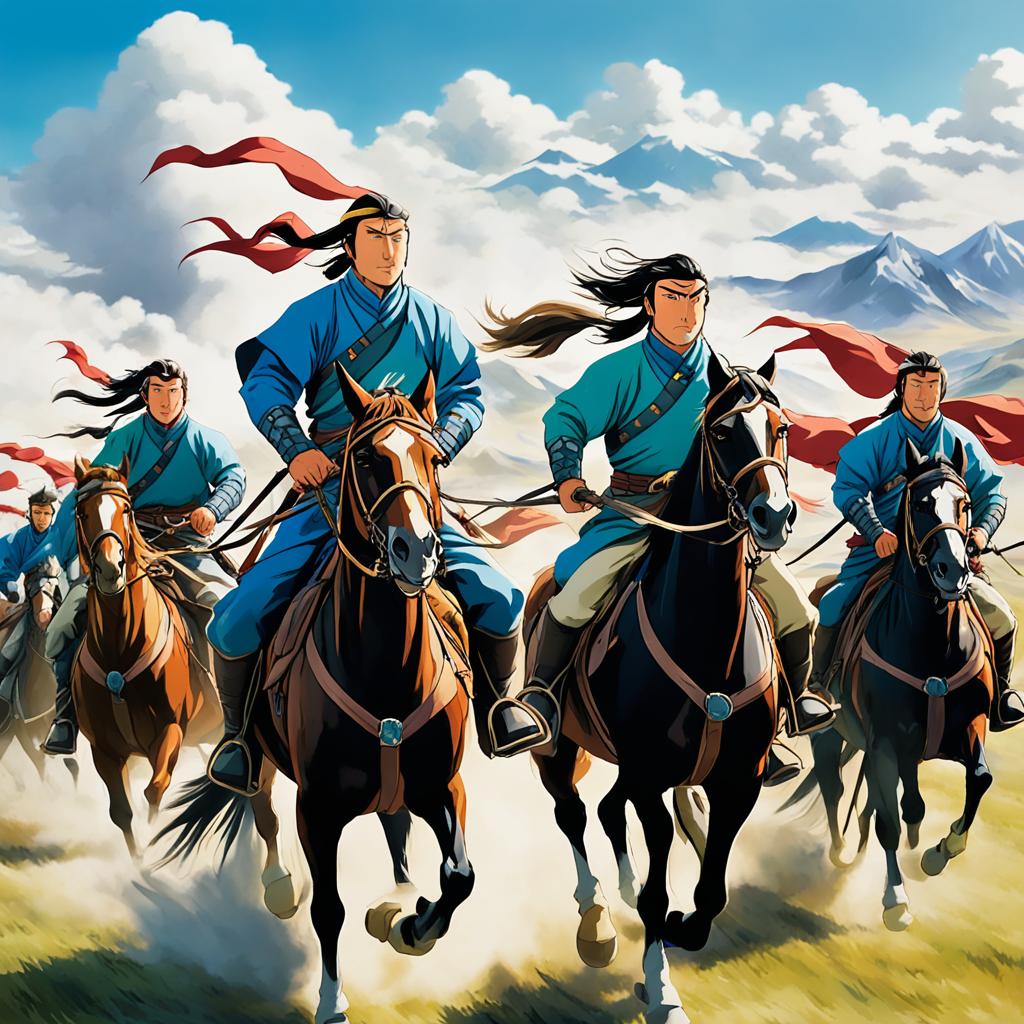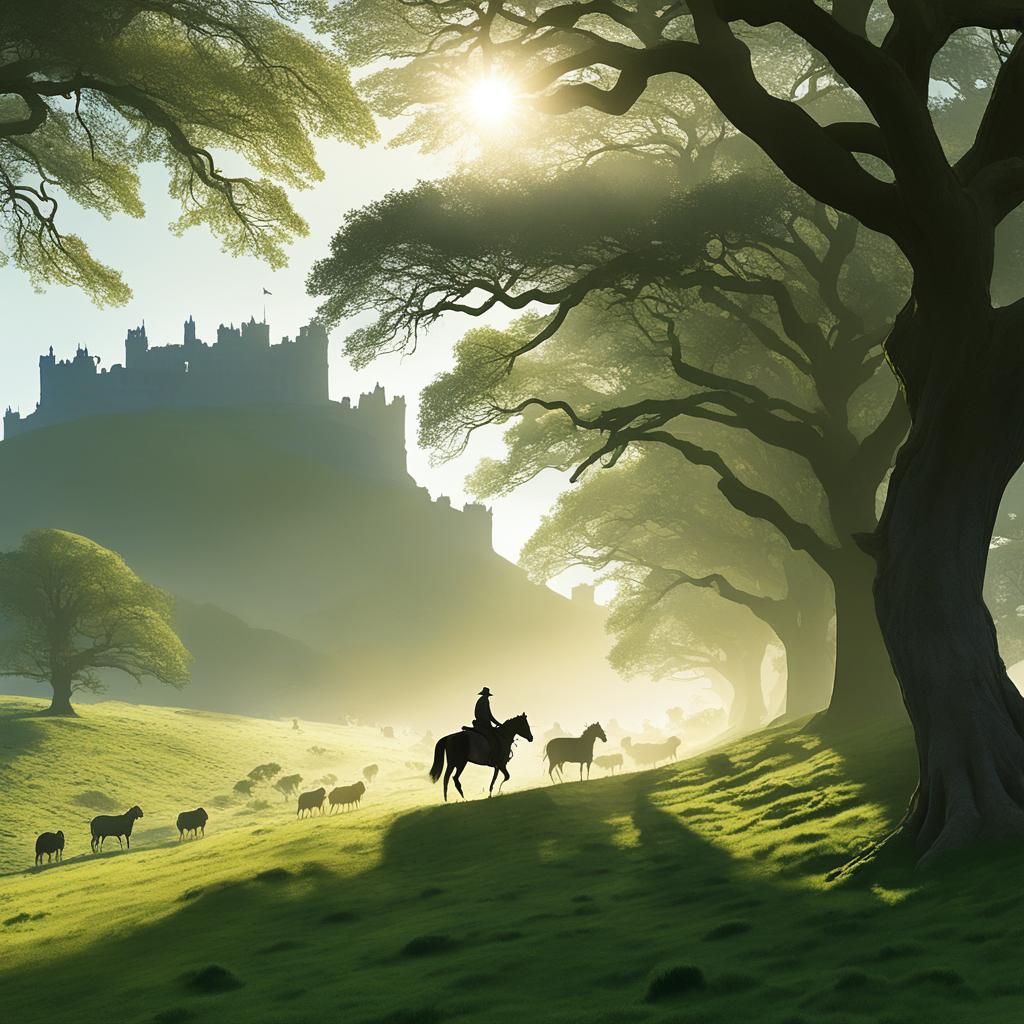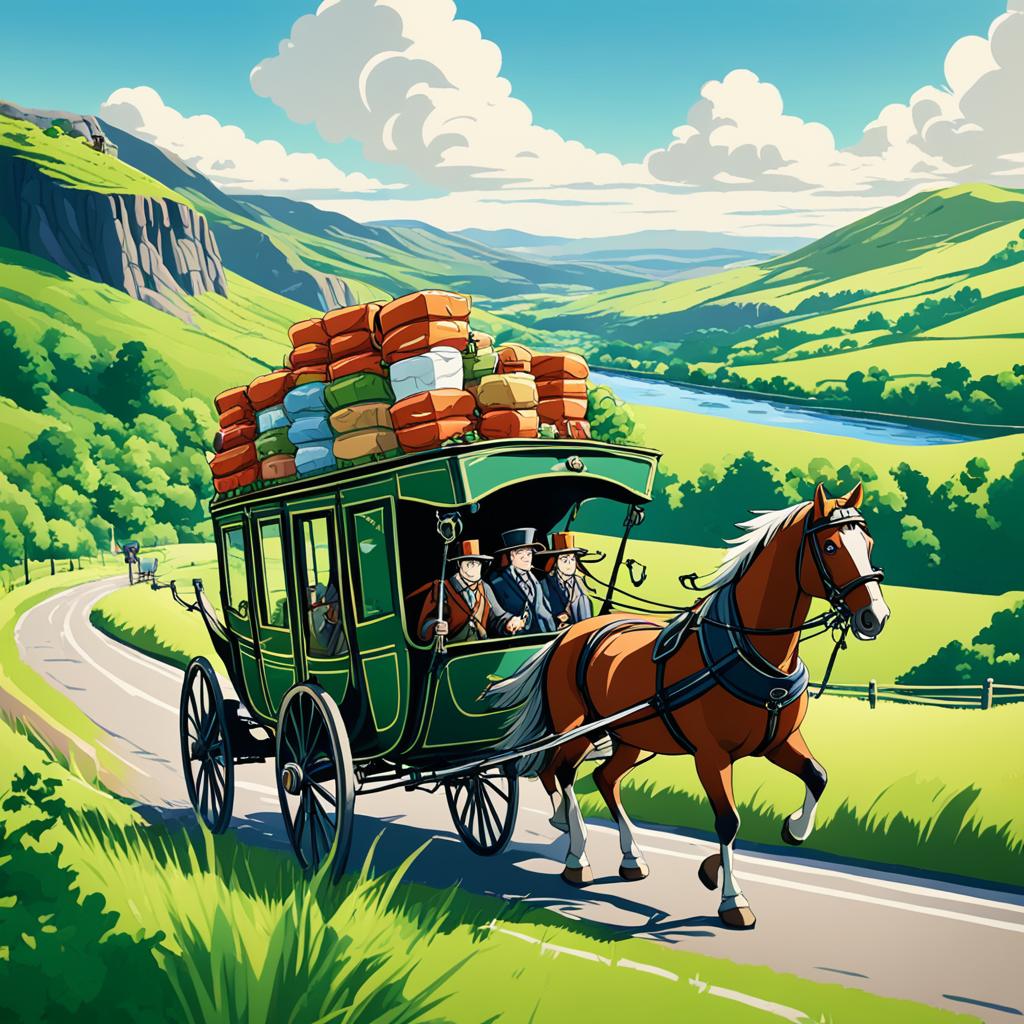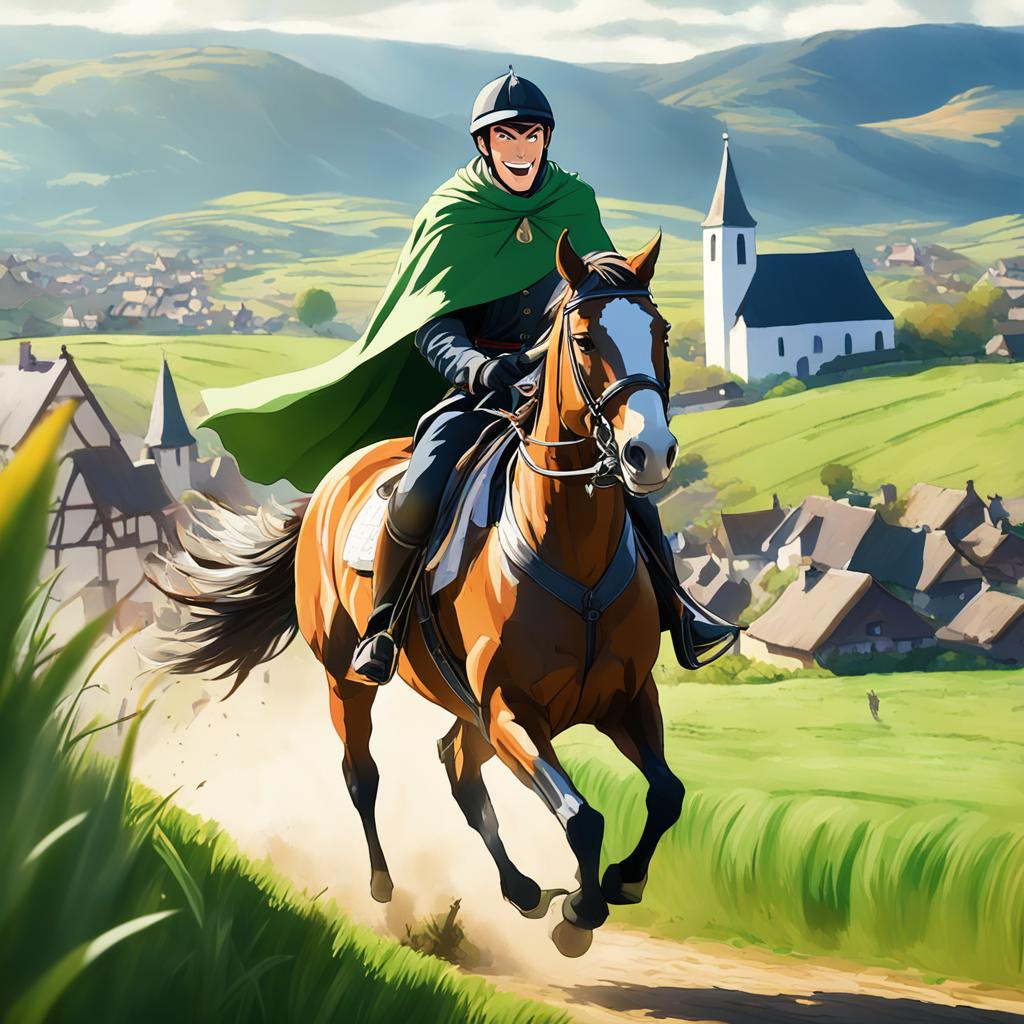Have you ever wondered how long it took to travel from London to Edinburgh before the advent of modern transportation? Forget about quick flights or high-speed trains. Let’s take a journey back in time and explore the world of horseback travel. Join us as we uncover the fascinating history of stagecoach services, public coach service, and the travel time it took to journey from London to Edinburgh. From the bustling streets of seventeenth-century Edinburgh to the picturesque landscapes of the Scottish Highlands, prepare to be amazed by the tales of those who traversed these long distances on horseback.
Lace up your boots, saddle up, and get ready to uncover the truth about this remarkable mode of transportation in our informative article. You won’t believe how long it actually took to travel between these two iconic cities. Are you ready to unveil the secrets of horseback travel from London to Edinburgh? Let’s dive in!
Historical Impact of Horse Travel

Horse travel has played a crucial role in shaping history, particularly in the areas of military strategy and rapid communications. Throughout different civilizations, horses have provided speed, agility, and endurance, making them valuable assets for both warfare and messaging systems.
One notable example is the ancient Persians, who established a system of horse relays for swift message delivery. This system enabled messages to travel swiftly, similar to the efficiency of the Pony Express in later years.
The Mongol cavalry, renowned for their exceptional riding skills and speed, utilized horse travel to expand and control one of the largest empires in history. The Mongols’ ability to swiftly move their troops and engage in lightning-fast raids was a strategic advantage that allowed them to conquer vast territories.
In France, a highly sophisticated relay system was developed, serving not only as a means of travel but also as a vital communication and transportation network. At its peak, France had around 2,400 relay stations strategically placed about 15 miles apart. These stations facilitated efficient travel, ensured rapid message delivery, and supported the transportation of goods, contributing significantly to government administration and economic growth.
With the advent of railways in the mid-19th century, horse travel gradually lost its prominence. However, its impact on military strategies and rapid communications has left an indelible mark on history.
| Impact of Horse Travel | Examples |
|---|---|
| Military Strategy | Mongol cavalry’s conquests |
| Rapid Communications | Ancient Persian relay system |
| Transport and Travel | The French relay system |
The Epic Journey of Jane Dotchin

Jane Dotchin, an 82-year-old woman, has embarked on an extraordinary annual trek from England to the Scottish Highlands since 1972. This epic journey covers approximately 600 miles over seven weeks, taking her from her off-grid smallholding near Hexham, Northumberland, to the majestic landscapes of Inverness in the Scottish Highlands.
Setting off each day with determination and resilience, Jane travels between 15 and 20 miles, accompanied by her faithful pack pony and beloved pet dog. Carrying everything she needs in her backpack, including her tent, food, and a few belongings, Jane embraces the freedom and adventure of the open road.
As she traverses the rugged terrain, Jane’s companion, a Jack Russell Terrier named Dinky, rides comfortably in the saddlebag, adding an extra layer of companionship and joy to her journey.
Despite her age and the challenges life may have thrown her way, Jane perseveres, driven by her love for the annual trek. With an eyepatch adding to her unique character, Jane Dotchin continues to defy expectations and embraces this tradition with unwavering enthusiasm.
Inspiring adventurers of all ages, the remarkable journey of Jane Dotchin reminds us of the indomitable human spirit and the unbreakable bond between humans and their animal companions. Her annual trek is a testament to the strength of the human will and a celebration of the breathtaking beauty that awaits those who embark on their own extraordinary journeys.
Jane Dotchin’s Long-Distance Trekking Origins
Jane Dotchin, an adventurous long-distance trekker, began her journey into the world of long-distance trekking about 40 years ago. It all started when she embarked on a remarkable expedition riding her trusty Halfinger stallion from her home to the West Country in England. The journey covered an impressive distance of approximately 300 miles, giving Jane a taste for the challenges and rewards of long-distance travel.
Impressed by the experience, Jane decided to make this journey an annual tradition. Initially, she rode south, as the bridleways in that direction offered better conditions for her trek. However, as time went on, the area she traveled through became more developed and congested, creating challenges for her peaceful journey.
In order to overcome the congestion and maintain the serenity she sought, Jane made a pivotal decision to change her route and head north instead. By doing so, she would escape the bustling regions and venture into picturesque landscapes, avoiding the frustrations of congested areas. For the past three decades, Jane has been making this journey every autumn, heading north on her remarkable trek through less-traveled routes.
Her journey, spanning approximately seven weeks, showcases her determination to explore new territories and experience the beauty of nature without the hindrances of congestion along the way. The duration of her trek may vary depending on the weather conditions, but Jane’s love for long-distance trekking remains unwavering.
Discover the changing landscape of Jane Dotchin’s annual long-distance trekking adventure through the West Country to the Scottish Highlands in the captivating images below:
Jane Dotchin’s Journey Logistics and Necessities

In her annual trek from England to the Scottish Highlands, Jane Dotchin relies on her extensive experience and knowledge of familiar routes, eliminating the need for maps. She navigates the journey with confidence, drawn to the beauty and tranquility of the landscapes she traverses.
Carrying everything she needs for her seven-week adventure, Jane is well-prepared for the journey. She packs a tent to ensure shelter throughout her trek, providing a comfortable resting place amidst nature’s embrace. Her pack is carefully organized, holding essential supplies, a few personal belongings, and her loyal companion, Dinky, the Jack Russell Terrier, nestled in the saddlebag.
While on her journey, Jane sustains herself with simple yet nourishing meals. Oat-based staples such as porridge and oatcakes provide her with energy and sustenance. These nutrient-rich meals, alongside savory cheese, keep her fueled as she immerses herself in the awe-inspiring landscapes that unfold before her.
To maintain communication and stay connected, Jane carries an old mobile phone with an impressive six-week battery life. This reliable device ensures she can reach out for help or stay in touch with loved ones whenever necessary. It also serves as a safety precaution, providing a lifeline in case of emergencies.
Jane Dotchin’s Trek Essentials:
- Tent for shelter
- Food supplies: porridge, oatcakes, and cheese
- Mobile phone with extended battery life
As she embarks on her annual journey, Jane Dotchin exemplifies the spirit of adventure and resilience. Her meticulous travel logistics and choice of familiar routes enable her to embrace the wonders of the English countryside and the allure of the Scottish Highlands. Jane’s commitment to simplifying her journey, relying on her knowledge and experience, showcases her dedication to the joy of exploration and the enduring bond between humans and nature.
Jane Dotchin’s Observations and Environmental Concerns
Jane Dotchin, during her annual trek, has been deeply saddened by the rampant littering she has encountered along the way. The sheer amount of discarded waste left behind, including single-use barbecues, is both appalling and shameful. This environmental impact has not deterred Jane from her journey, as she remains dedicated to her quest and the joy she finds in the picturesque countryside. Despite the littering issue, Jane is committed to experiencing the natural beauty and tranquility of the landscapes she traverses.
Witnessing the environmental degradation caused by littering has further fueled Jane’s passion for conservation and sustainability. She strongly believes in the importance of preserving the natural environment and raising awareness about the detrimental effects of littering. Through her journey, Jane aims to inspire others to take responsibility for their impact on the environment and to make more eco-conscious choices.
To address the specific issue of single-use barbecues, which contribute significantly to littering, Jane advocates for alternative and sustainable solutions. She encourages people to opt for reusable and environmentally friendly options, such as portable charcoal grills or picnic stoves. By reducing the use of single-use barbecues, we can minimize the environmental impact and protect the pristine landscapes that Jane holds so dear.
| Item | Environmental Impact |
|---|---|
| Single-Use Barbecues | Pollution from discarded materials |
| Reusable Charcoal Grills | Reduced waste generation |
| Picnic Stoves | Minimal waste production |
By making simple changes to our choices and habits, we can contribute to a cleaner and more sustainable environment. Jane Dotchin’s commitment to preserving the beauty of the countryside serves as a powerful reminder that each individual can make a positive impact in their own way. Together, we can strive for a more litter-free future and protect the natural landscapes that are an integral part of our cultural heritage.
Recognition and Inspiration
Jane Dotchin, a dedicated long-distance trekker, has been awarded the prestigious lifetime achievement award by The British Horse Society. Her unwavering commitment and adventurous spirit have made her an inspiration to riders around the world. Despite being in her 80s, Jane continues to embark on her annual journey, defying age and embracing the joy of riding and exploration.
Through her remarkable achievements, Jane has earned the admiration and respect of the equestrian community. Her passion for long-distance trekking has left a lasting impact on both riders and horse enthusiasts alike. She serves as a shining example of perseverance, determination, and the incredible bond between humans and horses.
Whether you’re an experienced equestrian or simply someone seeking inspiration, Jane Dotchin’s incredible journey will undoubtedly ignite your spirit of adventure and remind you of the boundless possibilities that lie within your reach.
Achievements and Inspiration
- Lifetime Achievement Award: Jane Dotchin was honored with a lifetime achievement award from The British Horse Society, recognizing her dedication and contributions to long-distance trekking.
- Inspiration to Riders: Jane’s commitment and adventurous spirit have made her an inspiration to riders everywhere, encouraging them to push their own boundaries and pursue their passion for equestrian exploration.
- Defying Age: Even in her 80s, Jane continues to embark on her annual journey, defying age stereotypes and demonstrating that passion and determination know no limits.
The Enduring Legacy of Horse Travel
Horse travel has had a profound impact on the development of our civilization. From ancient times to the present day, horses have played a crucial role in empowering human societies. The advent of horse travel revolutionized rapid transportation, communication, hunting, agriculture, and trade, greatly enhancing the quality of life for countless communities.
One remarkable example is the American Plains Indians, who relied on horses for their nomadic lifestyle. The introduction of horses to the tribes in the 16th century dramatically transformed their hunting and transportation capabilities, enabling them to cover vast distances and hunt bison more efficiently. This newfound empowerment fueled their expansion and cultural development.
The influence of horse travel is still evident in our language and culture today. The term “horsepower” is a testament to the enduring significance of horses as a symbol of power and strength. Despite their diminished economic importance in modern times, our bond with horses remains strong, as they continue to captivate our imagination and inspire a sense of adventure.
Horse travel not only left a lasting legacy in our history but also serves as a poignant reminder of the importance of exploration, adventure, and our deep connection to the natural world. As we reflect on the impact of horse travel, we recognize the empowerment it brought to our civilization and the invaluable role it played in shaping our past and present.


